Day: October 6th, 2007
OHNY 2007: Paul Rudolph Foundation
Missed connections + emergency root canal (not mine) = no Arcade Fire et. al. on Randall’s Island tonight. Too bad — I heard it was an awesome show.
Silver lining: the concert ticket snafu freed me up to visit one of the openhousenewyork sites I’d been wanting to check out for the past few years: the Paul Rudolph Foundation/Modulightor Building in midtown. As in years past, the site would be open for one day only, and this was to be the first Saturday in years I was able to attend.
After meeting up with SYB after his volunteering gig, we made our way to 248 East 58th Street to tour the last New York City townhouse built by Late Modernist architect Paul M. Rudolph (1918-1997). By the time we arrived at dusk, the line to enter stretched well down the block, but SYB (and guest) got to jump ahead, owing to his status as an OHNY weekend volunteer.
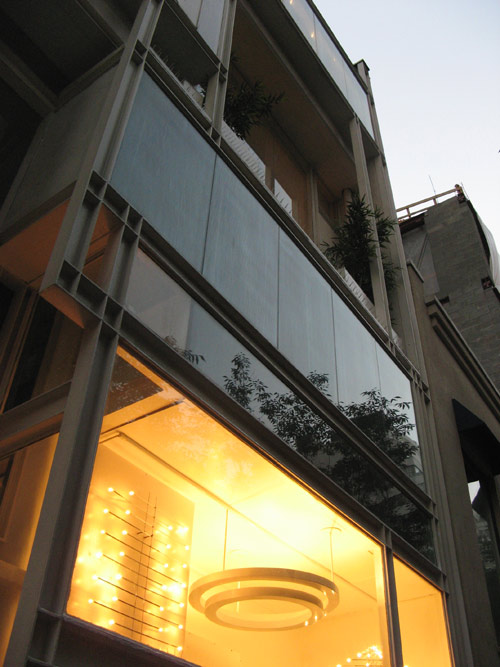
Rudolph lived in a four story, 17-level space at 23 Beekman Place, but in 1989, the architect and his longtime companion, Ernst Wagner bought the then-commercial structure we were visiting tonight with the intention of converting it into rental units. The space took 14 years to fully realize — the last of the glamorous city apartments Rudolph designed — during which the architect fought his long, fatal battle with mesothelioma. He left the townhouse to Wagner, who oversaw the completion of the upper duplex after Rudolph’s death. It is there that Wagner now resides, in a space which doubles as the seat of the Paul Rudolph Foundation, a nonprofit group that seeks to perpetuate Rudolph’s design ideas. Modulightor, the innovative lighting company Rudolph and Wagner founded, occupies the building’s first two floors. (Those showrooms were completed in 1996, a year before Rudolph’s death.)
I’ll leave the design commentary to the trained architects (at least one of whom I know reads this blog), and just relate my impressions. As soon as we stepped off the elevator, the sleek exterior revealed a complicated, multi-leveled interior. Dozens of OHNY visitors circulated up, down, around and through the puzzle box of a townhouse. Several just plopped themselves onto the built-in couches to take in the intricately interwoven space around them: all white and glassy, reflective surfaces, with bookcases, floating shelves and open staircases creating layers that combined into a series of unusually shaped compositions that belied the narrow confines of the 20-foot-wide building. The residential duplex was originally designed as two separate two-story apartments, front and rear; Wagner occupies both as a 2,700-square-foot merged unit. For all its complexity, though, I was happy to see that the space still functioned as a home rather than just a showroom; the kitchen had a less-than pristine patina, and we spied a cell phone charging in the bathroom.
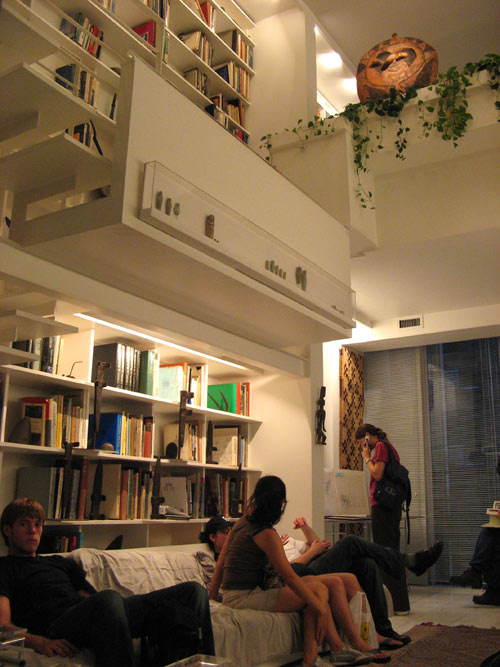
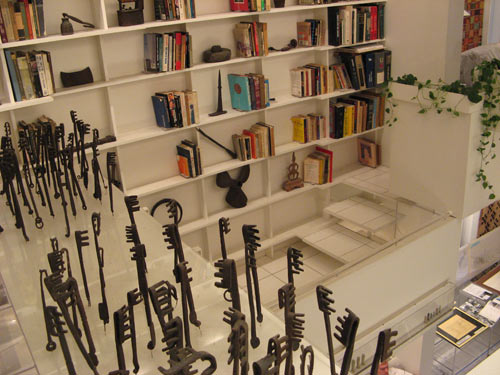
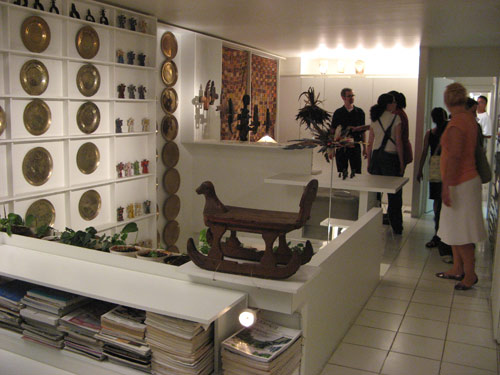
The rear garden:
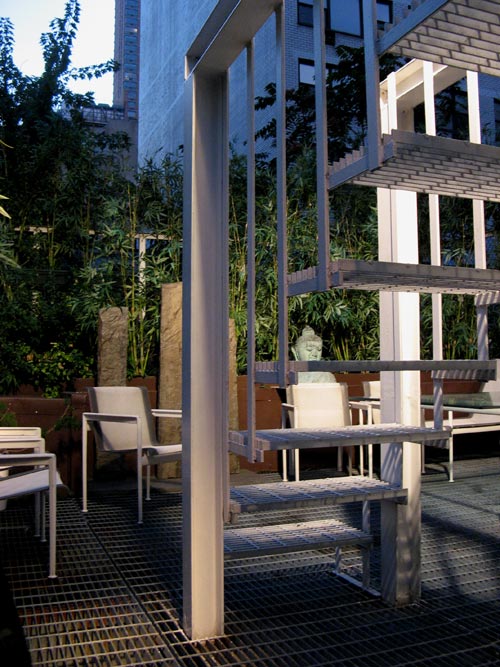
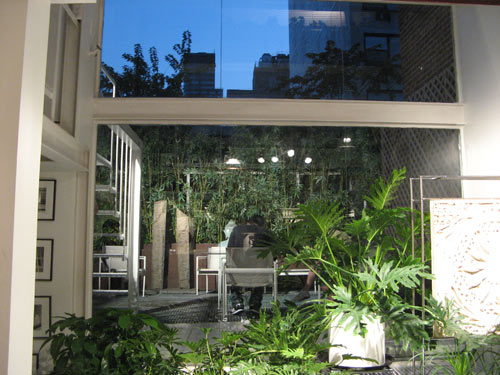
One of Rudolph’s most important works is the Art and Architecture (A&A) Building at Yale, where Rudolph was an influential dean of the School of Architecture in the 1960s. The 1963 landmark structure is currently undergoing renovation by New York-based firm Gwathmey Siegel & Associates.
Check out the rest of the Paul Rudolph Foundation photo set on flickr.
OHNY 2007: Voelker Orth Museum
Site #2: The Voelker Orth Museum, Bird Sanctuary and Victorian Garden in Flushing.
The historic house was built in the 1890s and eventually purchased by Conrad Voelcker, a successful printer who emigrated from Germany in 1881 with just a wooden trunkful of possessions. For the next century, the house remained in the family until his granddaughter Elizabetha Orth’s death in 1995. Orth, a never-married retired schoolteacher with no descendants, left the house and its grounds (and a rather substantial sum of money) to the Queens Historical Society, the Queens Botanical Garden and the Theodore Roosevelt Sanctuary of the National Audubon Society in Oyster Bay, Long Island, stipulating in her will that her legacy was to be used to promote local history, Victorian gardening, and bird sanctuaries. The house – which had been looted and vandalized in the years immediately following Orth’s death – was restored with great attention to original period detail, and opened to the public as a museum in 2003. House tours are now conducted weekend afternoons throughout the year.
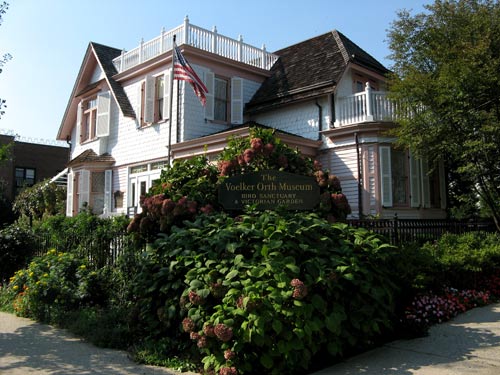
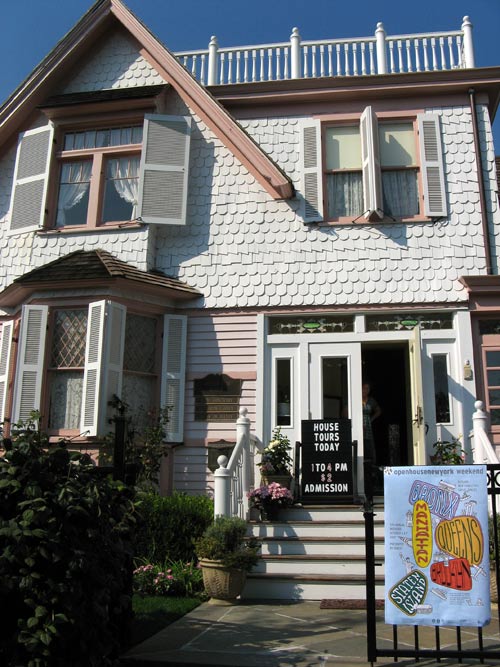
As we waited in the foyer for our OHNY guided tour to begin, I had a chance to talk with the museum’s caretaker, a young man who actually lives inside the house on a part of the upper floor, which has been converted into a separate (modern) studio apartment for that purpose.
Our guide brought us through the first floor rooms, which included a parlor outfitted with a still working victrola and a baby grand piano (not a Steinway, though), an intimate library, formal dining room and kitchen. Upstairs, we were able to view Orth’s bedroom, decorated as it would have been during her childhood, with her original bed, dresser and dolls.
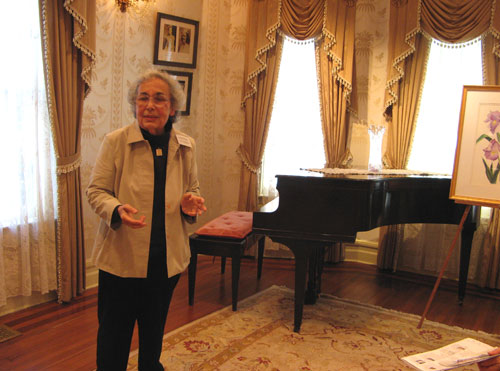
Perhaps the most distinguishing feature of the museum is the prize-winning Victorian garden, which is overseen by the Queens Botanical Garden. The period plants – including those inside the house — are not only landscaped in the Victorian style, but maintained using 19th century propagation methods and gardening techniques, such as hand pruning and natural fertilization.
J and C were able to join in on the tour of the house, which prior to this afternoon, none of us had any idea even existed — just another random glimpse into Queens history.
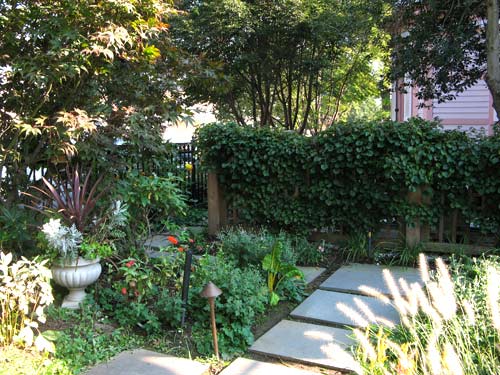
Check out the rest of the Voelker Orth Museum photos on flickr.
OHNY 2007: Hindu Temple Society of North America
Mom had been wondering what it is I do on the weekends after I leave Queens, so since I didn’t have to pick up the tickets for tonight’s Arcade Fire show for a few hours, I invited her along to the first of my openhousenewyork weekend tours.
The Hindu Temple Society of North America is nestled among multi-family houses in a predominantly nondescript middle-class residential neighborhood. As we turned the corner onto Flushing’s Bowne Street, we were met suddenly with its looming grey architecture, gilded Ganesha and bright red doors.
The ornate temple is rumored to be the continent’s oldest and with 20,000 devotees, certainly one of its largest. The building was designed and built in India and moved to Queens in the mid-1970s, where it was reconstructed by master craftsmen in full accordance with Hindu principles.
The site is also notable for its community center and basement canteen, which according to The Times’s reviewer Peter Meehan, serves “some of the best dosas in the city.”
I never confirmed that, however. Shoes are not permitted inside the temple, and as I considered wandering through the grounds barefoot, my dreaded fear of the fungorrhea™ got the better of me. It may be entirely irrational (or maybe not) but although I did very much want to see the temple’s famed carved black granite shrine, I just couldn’t bring myself to do it this afternoon. These shots were taken from outside the perimeter.
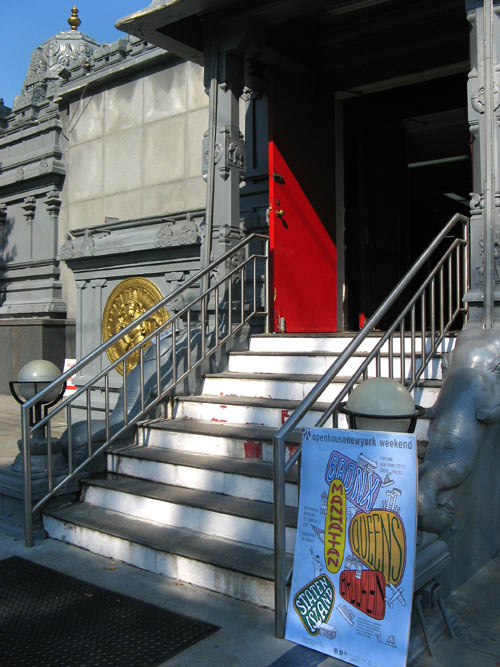
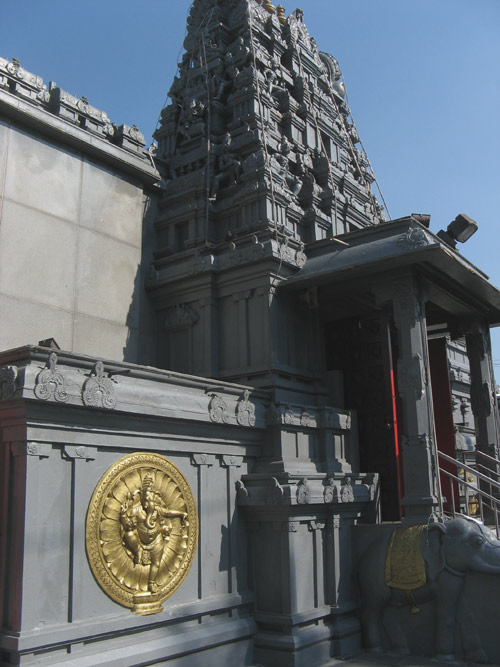
Am I a mycophobe? Or does that term pertain only to mushrooms, and not to fungi generally? Perhaps verminophobe (germs) or automysophobe (being dirty) would be more apt?
I did remove my shoes to tour the Wat Arun in 2004, but maybe because I sensed then that it would be some time before I would find myself in Bangkok again. I know I’ll be back in Flushing, though, soon enough.
Search
Popular Tags
Categories
Archive
- July 2010
- July 2009
- January 2009
- November 2008
- September 2008
- August 2008
- July 2008
- June 2008
- May 2008
- April 2008
- March 2008
- February 2008
- January 2008
- December 2007
- November 2007
- October 2007
- September 2007
- August 2007
- July 2007
- June 2007
- May 2007
- April 2007
- March 2007
- February 2007
- January 2007
- December 2006
- November 2006
- October 2006
- September 2006
- August 2006
- July 2006
- June 2006